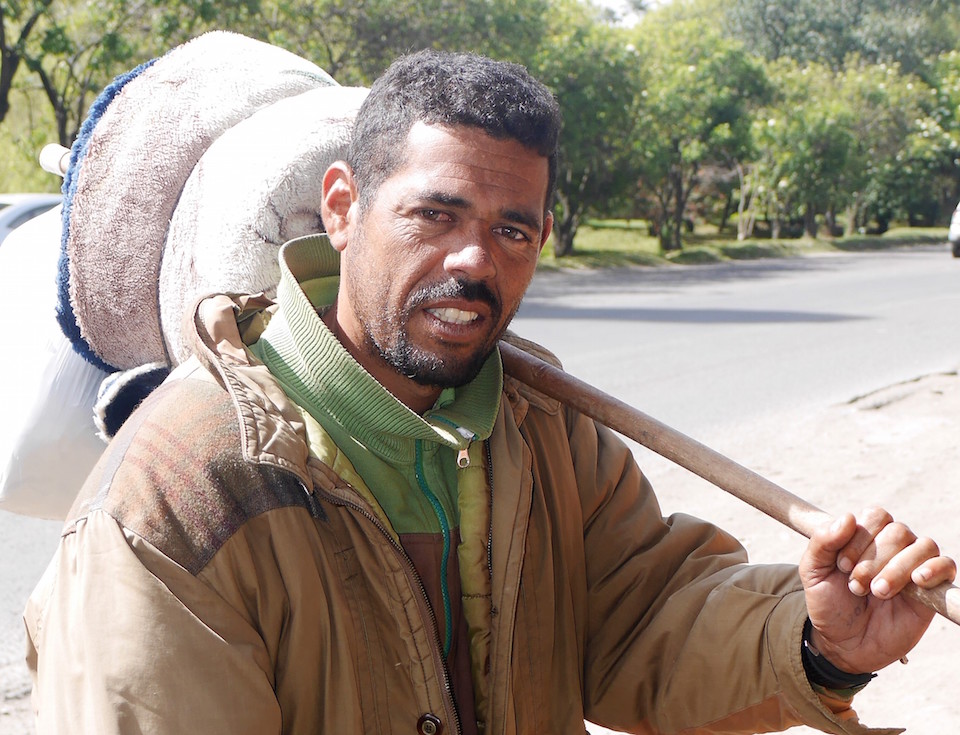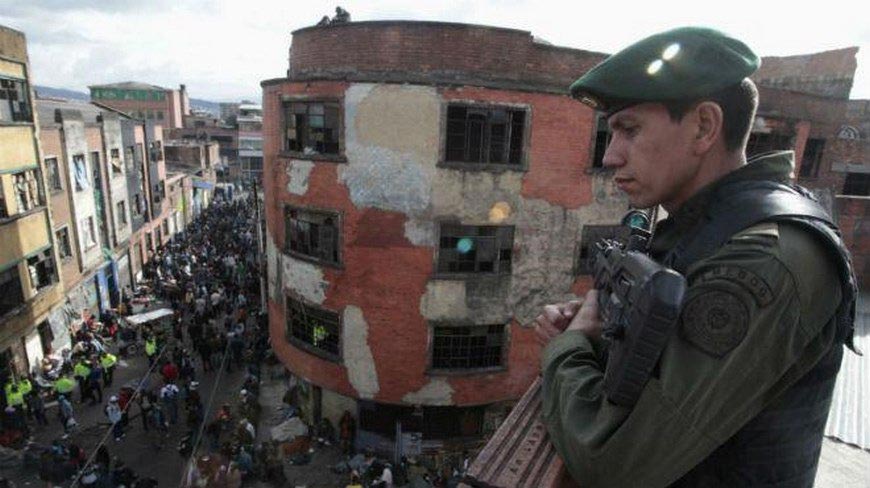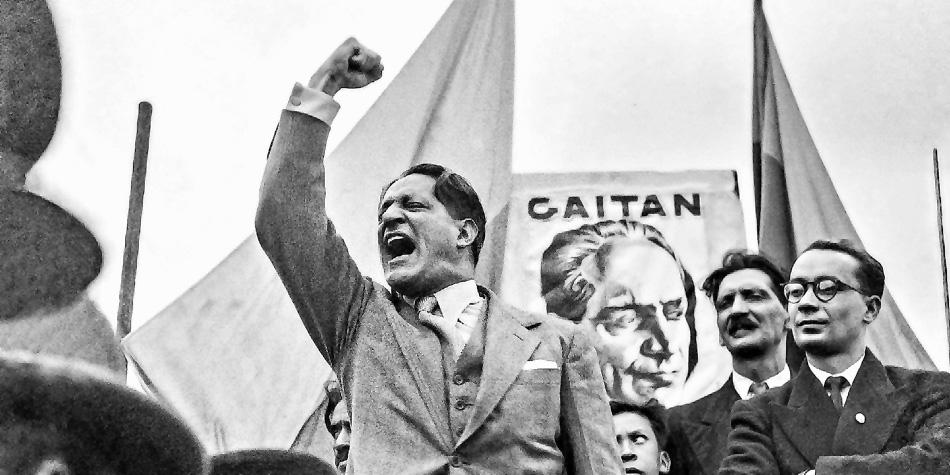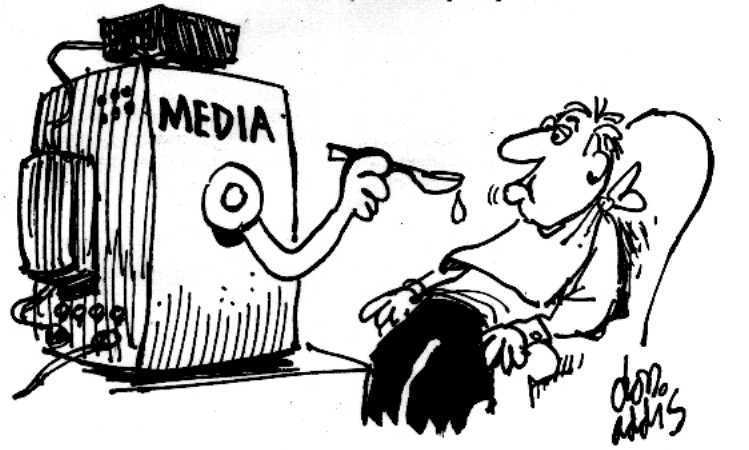 As new research shows the role the media coverage has played in fuelling misconceptions about the FARC and paramilitaries in the Colombian conflict, Oli Pritchard speaks to Alexandra García who carried out the investigation.
As new research shows the role the media coverage has played in fuelling misconceptions about the FARC and paramilitaries in the Colombian conflict, Oli Pritchard speaks to Alexandra García who carried out the investigation.
Depending on how much Spanish-language media you read, you may have seen a recent link on social media and on most of the major news sites called “De por qué odiamos a las FARC (y no tanto a los paras).” Loosely translated it means “On why we hate the FARC (and not so much the paramilitaries)”, and it’s based on the work of exceptional researcher, Doctor Alexandra García.
It’s important to remember the basic facts in Colombia amid all the contradictory proclamations. The paramilitaries and government (let us not forget the falsos positivos) accounted for many more victims than the guerilla. This is deeply at odds with the views of most Colombians, who are five times more likely to blame the FARC than experts do.
Why, then, do experts, victims, regular Colombians and victims’ rights groups have such vastly different perspectives? One reason, highlighted by García, is the words the used in the media.
Her research looks at hundreds of news clippings to evaluate the terms with which the Colombian media described the conflict from 1998-2006. What she discovered was astonishing in its scale, although hardly surprising to most well-informed observers.
The main thrust of García’s work concerns the contrast between the perception and reality when it comes to the FARC and the paramilitaries. As she points out, in 2002, Colombia elected a president that offered a very generous peace deal to the AUC without triggering mass protests or a national debate. Even more significant, of course, was the president’s name – Álvaro Uribe.
In fact, the very nature of media reporting changed during the period of his presidency. Between 2002 and 2006 media coverage of the conflict became even less impartial. A large number of headlines illustrate the point – where the FARC are actively named and indeed blamed, but when it comes to paramilitary violence, the actors are usually described in unclear terms such as ‘killers’, ‘people in hoods’, ‘armed men’ and so on.
It is striking to see that when the verb asesinar is used to describe atrocities linked to each group, the FARC are identified as the actors 60% of the time, whereas the paramilitaries just 25%.
It is striking to see that when the verb asesinar is used to describe atrocities linked to each group, the FARC are identified as the actors 60% of the time, whereas the paramilitaries just 25%. Even when the paras are identified as the guilty party, they are 5 times more likely to have modifying expressions such as ‘maybe’ or ‘allegedly’ added to the report. Furthermore, FARC actions were much more regularly described using words like ‘brutal’, or with gory descriptions of the violence.
García spoke to The Bogotá Post about her groundbreaking research and the state of contemporary Colombian media and society from her office in Sydney. She is engaging and passionate as she begins to explain the reasons behind her work. “In 2001, I was doing a master’s in education and in one class we had this concept of language and ideology. How we perceive reality through the lens of language. We were looking at a study of the Rwandan genocide and the language they used – that they were vermin and you kill them by hitting them on the head. You see the skulls in Rwanda, and they all have blows to the head. When I returned to Colombia and worked in Barranquilla, at a very affluent school, I saw the same patterns coming through, the language of extreme groups and the way they dehumanise the ‘Other’. These were the Uribe years and I felt like I was alone against the world.”
“I was teaching English, but through content,” she explains. “At the start, I had students that couldn’t tell the difference between an opinion piece and a more factual piece. I chose things that were obnoxious, something from a Nazi group justifying what they called the ‘euthanasia programme’. After [the students] read that, they said they agreed with euthanasia and, then I showed them another programme with the other view.”
She continued, “When we talked about the country the same language was there. Whenever we discussed the country, the guerrillas were always the enemy and they completely ignored the paramilitaries.”
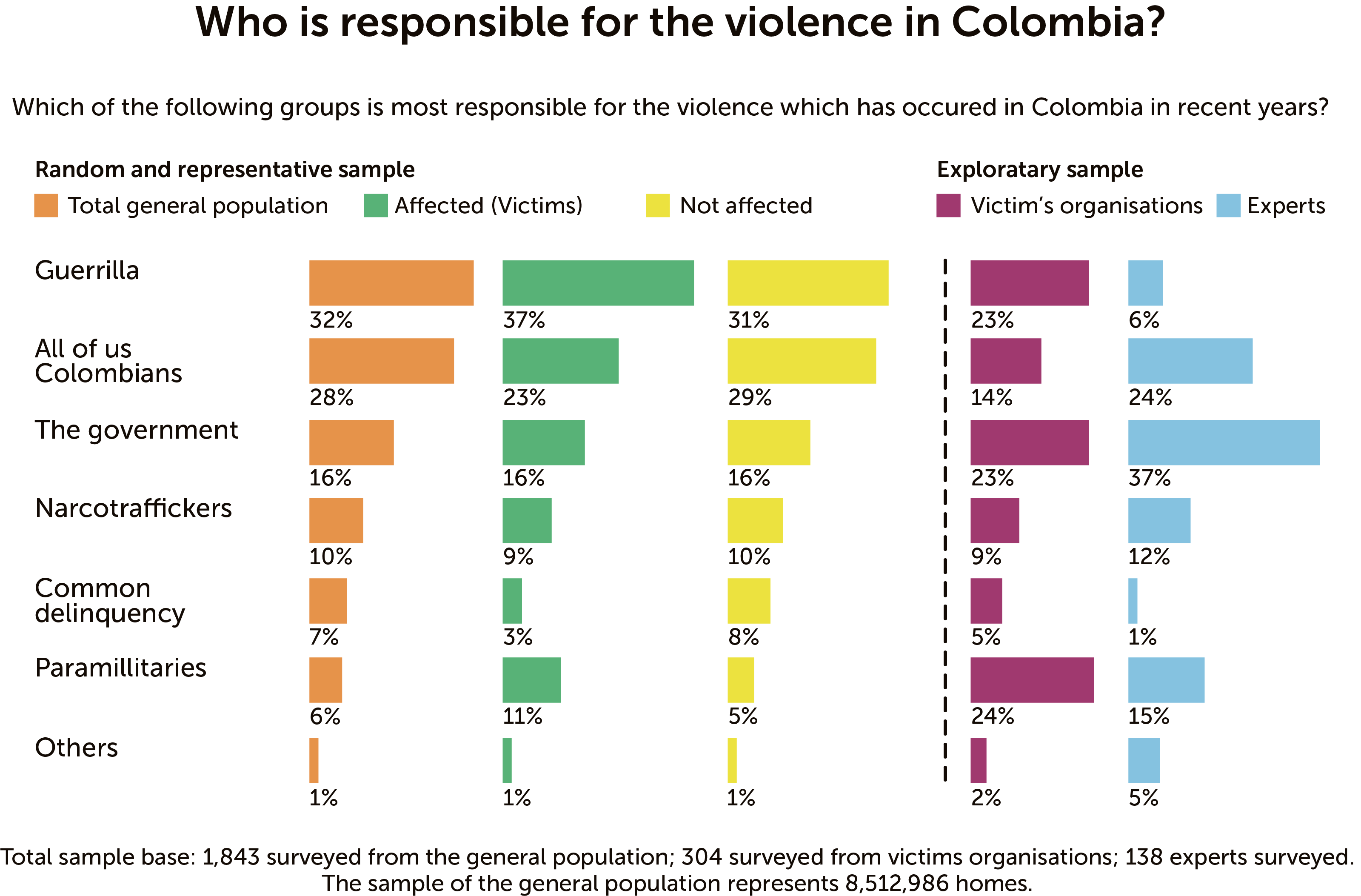 She says the tendency to believe anything one is told is not uncommon. “Actually, there have been studies that show that, in Colombia, only about 2% of the population have any critical thinking ability. They’re often not able to tell opinion from fact or to check the veracity of the stories they read. We are very uncritical, so that is why people believe if they vote they will turn gay or become like Venezuela or any of these things.”
She says the tendency to believe anything one is told is not uncommon. “Actually, there have been studies that show that, in Colombia, only about 2% of the population have any critical thinking ability. They’re often not able to tell opinion from fact or to check the veracity of the stories they read. We are very uncritical, so that is why people believe if they vote they will turn gay or become like Venezuela or any of these things.”
Of course, taking a position of exposing the paramilitaries and in acting against the interests of the elites can bring problems. García agrees, “I’ve been asked if I support the FARC and accused of being sponsored by the guerrillas. It’s not that I want to defend the FARC or say that they’re not that bad. They have done terrible things,” she adds with a steely emphasis, “the problem is that we had paramilitaries doing four times as much bad. During the Caguan period, the negotiations with [former president] Pastrana, when everyone was fed up with the FARC, the paras were killing four times as many people!”
“We cut that peace process because the FARC were not responding, but then we started with a president who had clear links to the paramilitaries. We had a peace process with the paramilitaries, where there hasn’t been justice, there hasn’t been reparations, there hasn’t been any of that. How can we do one thing, but not the other? That was my question.”
It’s a question that rings true. That demobilisation (note the language, it’s not a peace process) was quick and still has a number of unresolved issues hanging over it.
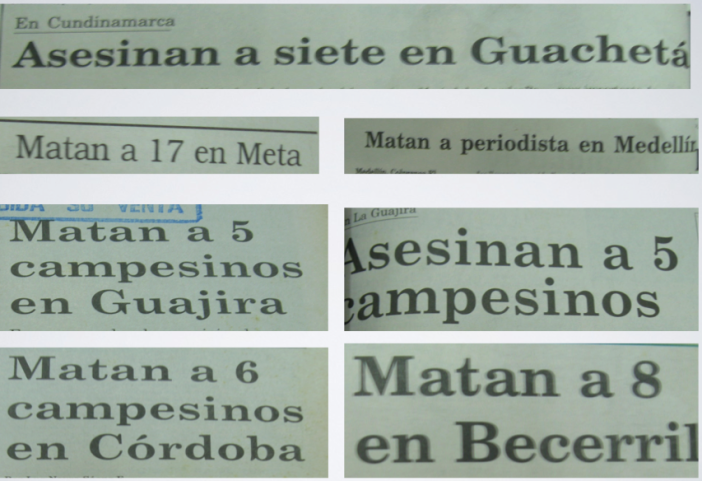
Newspaper reporting when massacres had been carried out by paramilitaries…
Alexandra thinks that it wasn’t fear of speaking out that affected her students, it was a lack of awareness. She explained that the labels given to the groups plays a big part in influencing perceptions. “They would think they were the same thing, or that [the paramilitaries] were protecting the people from the abuses of the guerrilla. But statistics show that they were rare, fights between the guerrilla and paras. What they did was displace populations and carry out massacres. When they did come into conflict with the guerrilla it was usually the guerrilla engaging them in combat.
She remembers talking to her thesis supervisor as she realised this type of thinking had become normal. She points to the example, ‘Another massacre by the autodefensas’ and says: “If they are self-defence groups, how can they be carrying out massacres? Just in that headline you see the contradiction. But it’s a very powerful thing. If you refer to people as self defence groups then people will start believing that they really are.” And on the other side, she says, the FARC are rarely referred to by their full name. Dropping down to the acronym obscures the part about revolution, the fact that they have an actual political position.
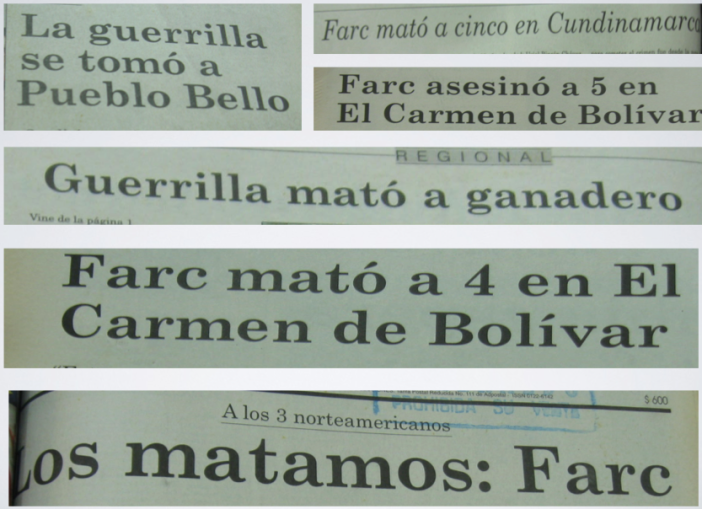
And when reporting the same when committed by the FARC.
Doctor García has applied the same methodology of analysing language to the constitution, and she thinks that attitudes towards the FARC are part of a continuation and codification of a pre-existing mentality. “In the Colombian constitution of 1886, the word equality isn’t even mentioned once. In 1991, 23 times I think. So it was a big change. We were founded on a system like India, with the castes. Not based on skin colour, although colour almost always matches income and position here.”
For her, to some extent it is about “one group trying to change the status quo, and another trying to protect it.”
She also labels the FARC “inefficient, incoherent and counterproductive”, explaining that they have damaged the development of any real left wing. “After what the FARC have been doing for 60 years, no peasant has received an acre of land because of them. The way they treat their troops is terrible, they are oppressors and counterproductive because there has been no leftist movement in Colombia. Now, a leftist president could be terrible like Venezuela, or could be good like Mujica in Uruguay. But it’s unthinkable in Colombia, because of the FARC.”
Alexandra agrees with the many political commentators who now talk about echo chambers. Furthermore, it’s becoming more and more common to dismiss contradictory evidence.
It’s one of the reasons her research is so important because the media plays a significant part in shaping people’s perceptions. “When people have made up their minds, it’s hard to change them,” she said.
“People believe what they want to believe. People commenting on my blog often said I was wrong, that the guerrilla killed more people. I have the statistics from the Centro Nacional de Memoria Histórica. Even after finding the data, they still refused to believe it.”
We had a peace process with the paramilitaries, where there hasn’t been justice, there hasn’t been reparations, there hasn’t been any of that. How can we do one thing, but not the other? That was my question.
She doesn’t hide the fact that she was also in the dark. After all, the media narrative was pervasive, “even I believed that when I started. That it was just two rival bands of drug dealers killing each other. But then I realised it was the legal economy. There’s a mine in César surrounded by massacre sites. In fact, 80% of displaced people in Colombia come from municipalities that produce energy or have mines, and that’s also where 87% of the human rights abuses take place.”
“In Colombia we keep the appearance of democracy but in fact the whole apparatus of the state is at the service of these elites, these groups. My supervisor said to me, ‘this is so evident, so obvious’. And the thing is, I only picked the worst of the worst. If I had wanted to make it look worse, I could have. But even these terrible cases, we don’t see the AUC, we don’t see paramilitaries, we don’t even see self-defence.”
It’s often said that Colombia is a uniquely violent society, despite the fact that a sadly high number of countries have had a large number of massacres and violence. Alexandra sees this in more nuanced terms, “the problem is that in Colombia, killing your enemies is seen as legitimate. In 1875 an archbishop said that killing liberals was not a sin. That mentality, that killing your enemies is acceptable, that’s probably uniquely Colombian. Killing the ‘Other’ is fine. Killing your political opponent is okay. The fear of communism, of the left, has always been met with violence. That is reflected and legitimised in our language. For example, the man who misread the Miss Universe, people had memes showing Escobar ordering him killed. That idea is what we need to change in Colombia if we are ever going to have peace.”
Looking to the future, Alexandra is positive. She believes in peace and says that although she has reservations about Santos, she believes that he can deliver peace. “It is possible, because ideologies are resistant to change, but they can be changed. It depends on how we educate our children, and how we educate ourselves. The thing is, we need to see each other as equals. If we don’t, then we can kill them [the ‘Other’]. And that’s the role of the paramilitaries, they are the hitman, the black hand of the elites to stop whatever challenges them or the status quo.” It is clear that Colombia has much to do in order to deliver peace. Signing a peace deal is one thing, changing a culture and a media is quite another.

